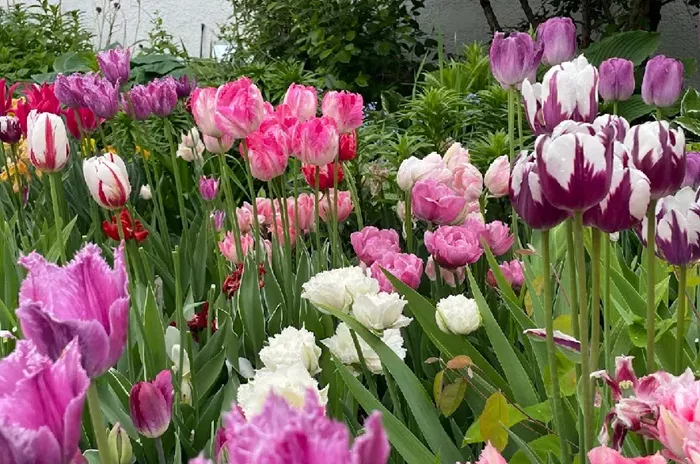Tulips thrive in full sun, so choose a spot on the west or south side of your house. Plant bulbs about seven to eight inches deep. If your soil is heavy clay, mix in sharp sand for better drainage. Avoid letting tulip bulbs sit in water, as this can cause rot over time.
When and How to Plant Garlic
Garlic is best planted in the fall. Separate the cloves, placing the hard, crusty side down and the pointed side up. Space them about a hand-width apart in even rows, and plant them around four inches deep.
When to Harvest Garlic
Harvest garlic in September when the stalks begin to bend. The tops should be stiff but slightly droopy when it’s time to pick them.
Vegetables to Plant in Fall for Next Year’s Crop
You can plant garlic and chives in the fall. Asparagus is also an option, but it takes about three years to produce.
Pruning Apple Trees in Late September
If you want to prune your apple trees, wait until the leaves fall off in October or early November. Trim back by at least one-third. For topping, wait until spring when new growth begins. When you cut a branch, expect two or three new branches to grow, called water sprouts. Trim them back to one in summer.
Caring for Mandevilla in Fall and Winter
Mandevilla is a tropical plant. Bring it indoors when temperatures drop below 5°C. Trim it to about one or two feet and remove any tendrils. Spray with insecticidal soap every 10 to 15 days. Keep it trimmed in winter, as low light can cause stretching. A grow light for eight to ten hours daily can help.
Using Peroxide to Control Bugs
A mixture of one part peroxide to four parts water can effectively control bugs in the soil. Just be cautious not to make the mix too strong.
Preventing Winter Kill in Your Lawn
Leaving leaves on your lawn can worsen winter kill by promoting snow mold. Clear leaves, trim grass to about 1.5 inches, and apply fall fertilizer. GroundKeeper fertilizer is a good choice, as it contains phosphorus and sulfur for improved disease resistance. As snow melts, fluff up the grass with a light rake to prevent snow mold.
Saving Canna Lily Bulbs
For canna lilies, let them die back naturally. If you’ve already cut them, allow the bulbs to dry. Store them in a cool room with peat moss to retain some moisture, checking monthly to prevent them from drying out too much.
Yellow Tips on Pine Trees
It’s normal for pine trees to show yellowing needles in the fall, especially during dry spells. Water them lightly, giving one good soak around the third week of October. Fertilize in spring with a 30-10-10 fertilizer every three weeks until mid-July.
Dethatching Your Lawn
Do not dethatch your lawn in the fall. If it’s thick and green, a dethatcher won’t be effective.
Overwintering Coleus
Bring coleus indoors for the winter. Trim off any seed heads to encourage fuller growth. Water it like a houseplant, and take cuttings in February or March to grow new plants. Cuttings should be taken just below a node and placed in water.
Controlling Invasive Ribbon Grass
Ribbon grass can be invasive due to its spreading rhizomes. To contain it, use lawn edging that is at least four to five inches deep or plant it in a buried nursery pot to act as a barrier.
Dealing with Suckers on Silver Maples
Prune suckers that grow from the base of silver maples. If left unchecked, they will grow like small bushes. This is often due to root damage during the tree’s early life and is a normal maintenance task.
Mixing Ashes with Potting Soil
You can mix ashes with potting soil to grow flowers or plant a tree. With a perennial bed or tree, you won’t need to change the soil often, unlike with an annual pot.
Growing Hollyhocks from Seeds
Hollyhocks take time to grow in their first year. Starting them indoors in March is ideal. Allow the current plants to be hit by frost, then cut them back to the ground.
Related topics:
- 3 Easy Tips to Protect Your Flower Bulbs from Rodents This Winter
- Which Plant Species Will Thrive Amid Global Climate Change?
- Rare African Corpse Flower Blooms in Atlanta: A Once-in-a-Lifetime Event


